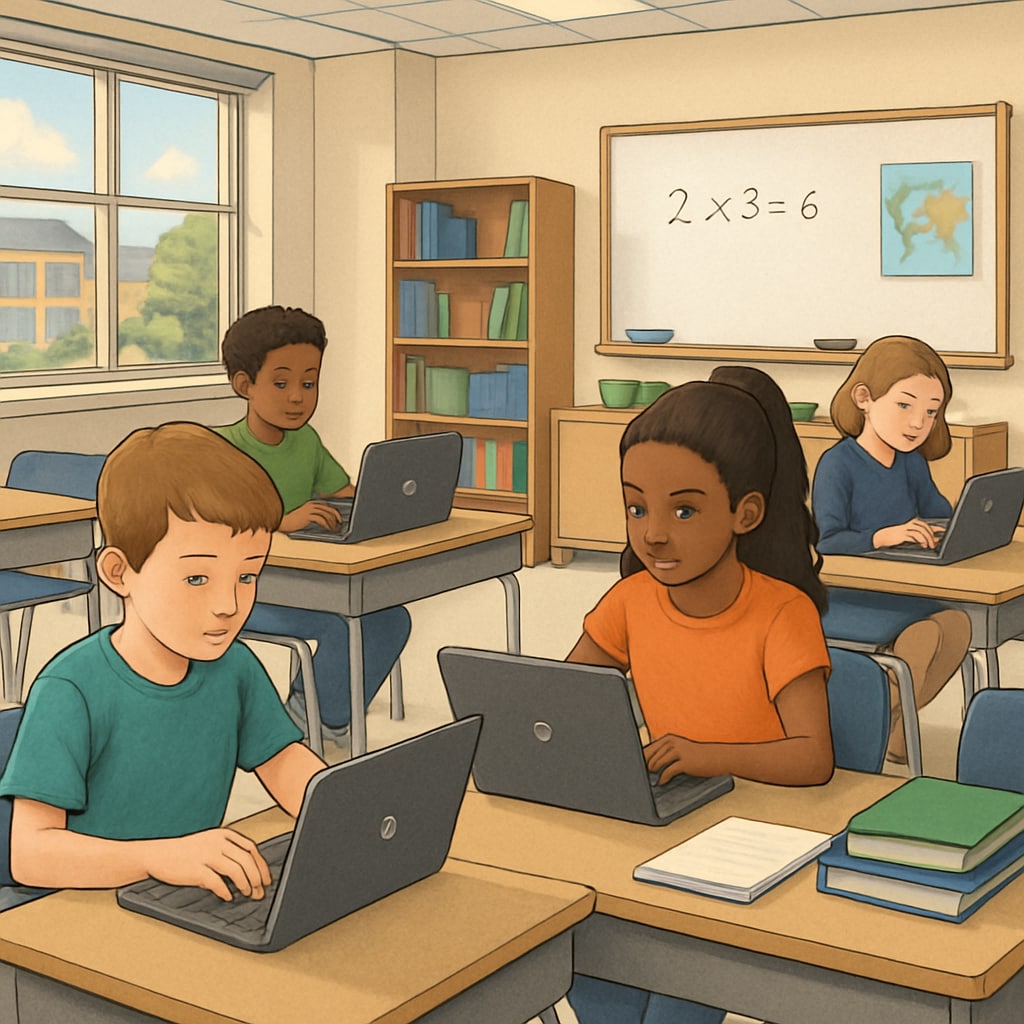In today’s classrooms, the integration of education technology, such as Chromebooks and online tools, has significantly enhanced efficiency. Students now have instant access to resources, streamlined workflows, and immediate feedback. However, this drive for technological convenience raises an important question: Is it compromising the development of critical thinking skills? As we embrace these innovations, educators and policymakers must strive to balance the benefits of technology with the essential goal of fostering students’ deep learning and intellectual independence.

The Efficiency of Education Technology
Education technology has revolutionized the learning experience. Tools like Chromebooks, interactive platforms, and AI-based tutors have made it easier for teachers to manage classrooms and for students to complete tasks quickly. For example, assignments that once required extensive manual research can now be completed in minutes using curated online databases. Additionally, platforms such as Google Classroom enable seamless communication between teachers and students, saving valuable time.
Efficiency is undoubtedly a positive outcome. By reducing administrative burdens and simplifying tasks, educators can dedicate more time to teaching. Furthermore, students can focus on mastering concepts rather than being bogged down by logistics. However, this streamlined approach may come with unintended consequences, particularly when it comes to the cultivation of critical thinking skills.
Critical Thinking: The Missing Component?
Critical thinking—the ability to analyze, evaluate, and synthesize information—is a cornerstone of education. It empowers students to tackle complex problems, make informed decisions, and question the status quo. However, the heavy reliance on education technology may inadvertently hinder the development of these skills. For instance, automated tools often provide answers without requiring students to engage in the underlying reasoning process. This convenience can lead to a superficial understanding of concepts.
Moreover, the structured nature of many digital platforms may discourage open-ended exploration. For example, multiple-choice quizzes and algorithm-driven learning paths often prioritize efficiency over deep inquiry. In this environment, students may miss opportunities to wrestle with ambiguity or engage in meaningful debates—activities that are essential for honing critical thinking.

Striking a Balance in the Modern Classroom
To ensure that education technology enhances rather than undermines learning, educators must adopt strategies that balance efficiency with depth. Here are some approaches:
- Blended Learning Models: Combine technology-driven instruction with traditional methods, such as Socratic discussions and project-based learning.
- Encouraging Open-Ended Tasks: Design assignments that require analysis, argument construction, and creative problem-solving, rather than simple recall.
- Promoting Digital Literacy: Teach students to critically evaluate online information and recognize biases in digital tools.
- Reflective Practices: Integrate activities that encourage students to reflect on their learning processes and question their assumptions.
By implementing these strategies, educators can create a classroom environment that leverages technology while preserving the space for deeper intellectual engagement.
Looking Ahead: Reimagining Education’s Goals
As technology continues to evolve, its role in education will only expand. However, this growth should not come at the expense of critical thinking. Education’s ultimate goal is not merely to produce efficient learners but to nurture thoughtful, adaptable individuals who can navigate a complex world. Therefore, schools must prioritize the cultivation of both technological proficiency and intellectual depth.
In conclusion, the relationship between education technology, critical thinking, Chromebooks, and efficiency is not inherently adversarial. With thoughtful implementation, these elements can complement one another, creating a more dynamic and effective learning environment. The key lies in recognizing the limitations of technology and ensuring that its use aligns with the broader objectives of education.
Readability guidance: This article uses short paragraphs, transition words, and lists to enhance readability. Passive voice is minimized, and long sentences are kept under control to maintain clarity.


